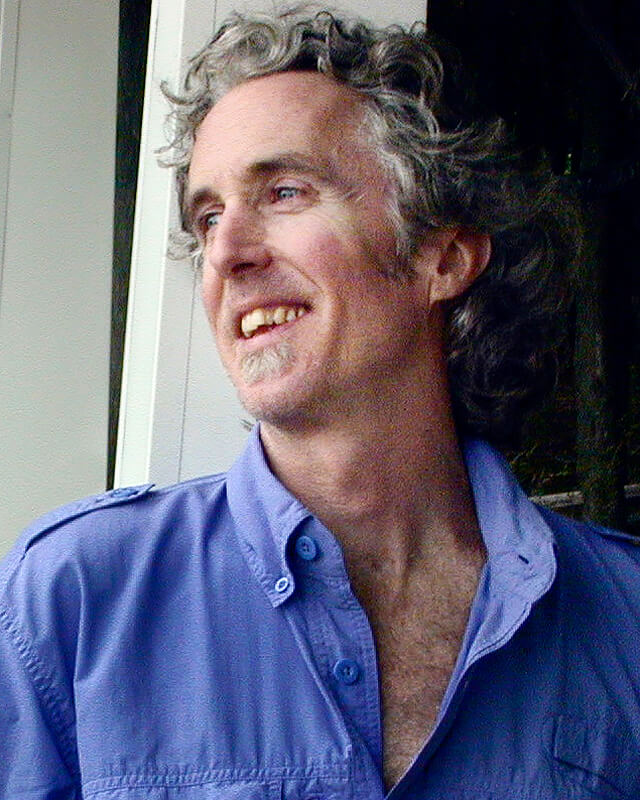Benjamin Dimmitt photographs wetlands and forests using film and a medium format camera. He uses his camera to investigate interdependence, competition, survival and mortality in the natural world.
Benjamin was born and raised on the Gulf Coast of Florida. He graduated from Eckerd College in St. Petersburg, FL and also studied at the International Center of Photography in NYC, NY, Santa Fe Photographic Workshop in Santa Fe, NM, Santa Reparata Graphic Arts Centre in Florence, Italy and City and Guild Arts School in London, England.
He moved to New York City after college and held an adjunct professor position at the International Center of Photography from 2001-2013. He now lives and works in Asheville, NC and teaches workshops throughout the Southeast.
Benjamin's photographs have been exhibited at Museum of Fine Arts, Houston, TX, School of International Center of Photography, NYC, NY, American Academy of Arts & Letters, NYC, NY, Ogden Museum of Southern Art, New Orleans, LA, Griffin Museum, Boston, MA, Florida Museum of Photographic Arts, Tampa, FL, Center for Fine Art Photography, Ft. Collins, CO and Midtown Y Photography Gallery, NYC, NY. In November, 2019, his work will be included in a three person climate change exhibit at Southeast Museum of Photography in Daytona Beach, FL.
His work is represented by Clayton Galleries in Tampa, FL and is in the collection of the Museum of Fine Arts, Houston, the American Academy of Arts and Letters, the Florida Museum of Photographic Arts and Eckerd College among many others. Ain't Bad, Architectural Digest, Black & White, Don't Take Pictures, Lenscratch, Oxford American, Orion, Photo District News, The New Yorker Photo Booth and others have featured Benjamin's photographs.
He was a finalist in Photolucida's Critical Mass Award in 2014, 2017 and 2018 and in New Orleans Photo Alliance's Clarence John Laughlin Award in 2014 and 2015.
An Unflinching Look
The Chassahowitzka National Wildlife Refuge is a very fragile, spring-fed estuary on Florida's Gulf Coast, north of Tampa. I was overwhelmed by its lush, primeval beauty on my first visit over 30 years ago and have photographed there extensively since 2004. The dense palm hammocks and hardwood forests were festooned with ferns and orchids and the fresh water creeks were a clear azure. There are other similar estuaries nearby but the Chassahowitzka River and the surrounding wetlands are protected as part of the federal National Wildlife Refuge system and the river itself is designated as an Outstanding Florida Water.
Unfortunately, saltwater began creeping up into the spring creeks around 2011. Rising sea levels due to climate change are the primary cause. However, the saltwater intrusion was accelerated when the state water commissioners, appointed by climate change denier and former governor Rick Scott, determined that the wetlands could survive with less fresh water. This new minimum flow policy would allow the state to increase the pumping of fresh water for large-scale inland developments and agricultural interests. The drawdown of fresh water for these lobbyists has taken fresh water away from the aquifer that feeds Chassahowitzka's springs and many others nearby. As the fresh water flow in the estuaries decreased, saltwater advanced upstream and took its place. What had been verdant, semi-tropical forest is now mostly an open plain of grasses relieved by palms and dying hardwood trees. Sabal palms are the most salt tolerant trees in this ecosystem and are the last to expire. This is a widespread phenomenon, occurring all along the Big Bend section of the Gulf coast of Florida.
In 2014, I began to photograph in the salt-damaged sawgrass savannas and spring creeks there as a way of reckoning with the ecosystem loss and of understanding what has become of my native Florida. I have narrowed my focus to a small, remote area that I know and love. My intention in bearing witness to this loss has been to portray the ruined landscape with respect, nuance and beauty. To document the progress of the saltwater intrusion, I have re-photographed landscapes that I first photographed as much as 30 years ago.
This ruin is the fate of estuaries around the world as sea levels rise. With increasingly fierce storms and extensive flooding along coastal areas, we are reminded that climate change is a certainty and a priority.
